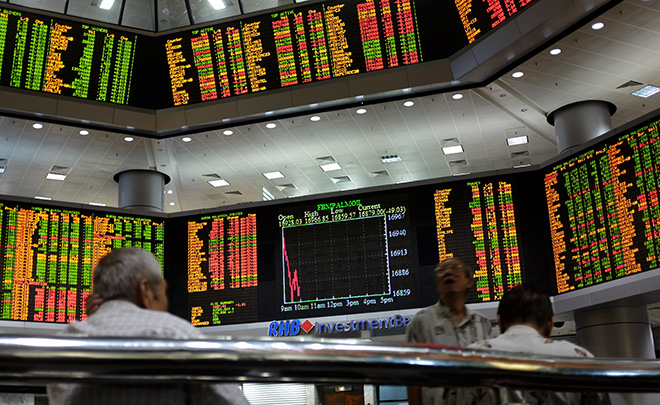THE continued weakness seen on the benchmark index paints a gloomy picture for the final month of the year with psychological 1,500 level “may not hold out for long”.
A break below the neckline at 1,483 would likely confirm the head & shoulders (H&S) pattern, targeting a move to the 1,270-1,300 levels based on the H&S measurement target, according to CGS-CIMB Research.
“Any rebound that takes place is likely to be capped by the falling weekly moving averages as well as the large Nov 1 gap of 1,545-1,562,” projected head of research Ivy Ng Lee Fang in a strategy note entitled “It’s a wrap for November; what’s next?”
“Over the longer term, the index needs to overcome the 1,618-1,625 resistance in order to confirm that the next bullish leg up is underway. For now, expect more consolidation in the month ahead.”
To re-cap, the FBM KLCI ended November at 1,513.98, down 48.33 points or 3.1% month-on-month (mom). The index fell and closed at a four-month low (on a monthly close basis) after the bears continued to put pressure on the index – albeit slowly – in November.
Trading volume in November tumbled 20% while trading value fell by 7%.
Nevertheless, FBM KLCI’s historical data shows that the benchmark index’s performance tends to be positive in December with an average mom gain of 2.2%/3.5% over the past 10 years/43 years, according to CGS-CIMB Research.
“We recently lowered our end-2021F FBM KLCI target to 1,495 points and introduced an end-2022F FBM KLCI target of 1,637 points based on 12-month forward price-to-earnings ratio (P/E) of 14.5 times,” noted the research house. “The recent cut in the 2021 FBM KLCI target is to reflect earnings revision post the 3Q 2021 results season.”
CGS-CIMB Research expects the market to be lacklustre till year-end as investors assess the potential impact of the COVID-19 Omicron variant and the potential earlier end to bond tapering in the US.
“Investors could also stay on the sidelines as they brace for the impact of the proposed 50% increase in stamp duty rates on contract notes which will make Malaysia the most expensive market to trade in ASEAN starting Jan 1, 2022 as well as the negative earnings impact from cukai makmur (prosperity tax) and removal of tax exemption on foreign-source income,” added the research house. — Dec 6, 2021









